How Much Does a Doctor Visit Cost With and Without Insurance?
Without insurance, medical care can get pricy fast. Where you live, what doctor you’re going to, and what tests you need will all figure into your doctor’s visit bill. In this article, we’ll break down those costs and give you some tips for saving money.

What Goes into the Cost of a Doctor’s Visit?
Geography is one of the biggest factors in the price of a doctor’s visit. Most medical facilities pass some of their overhead expenses onto their patients. If you live somewhere with a higher cost of living, like California or New York City, you’ll likely pay more for doctors’ visits. The practice has to pay more for utilities and rent, and those costs show up in your bill. For example, Mayo Clinic’s Patient Estimates tool quotes $846 for a 60-minute office visit in Jacksonville, Florida, but $605 for the same visit in Wisconsin.
Like the cost of living, supplies and equipment will also end up on your tab. Say you need a strep test, blood draw, or Pap smear. The supplies needed for the test plus the cost of the lab fees will all figure into the price.
Bills for the same exams and procedures can also vary depending on what kind of facility you’re going to. Smaller practices and public health centers are often a lot cheaper than university or private hospital systems. This is due in part to their buildings being smaller and their overhead fees being lower.
Price of Out-of-Pocket Doctors’ Visits
The cost of a doctor’s office visit also depends on what kind of doctor and the procedure you need to have done. For example, an in-office general wellness checkup will be cheaper than a specialist procedure. If you have an emergency, an urgent care center will be much more affordable than the emergency room.
Primary Care Physician — Physical Exam
Physicals usually include blood pressure readings, cholesterol measurements, and vaccines. Prostate exams for men and Pap smears and breast exams for women are also often included. Pediatric physicals focus on the growth milestones for your child’s age. Doctors check height, weight, sleep patterns, diet, and the vaccines required by public schools.
The range for a yearly physical can be anywhere from $100 to $250 or more without insurance. A CVS Minutecare Clinic may charge just $59 for a sports physical, but not all organizations will accept this as proof of physical health.
Primary Care Physician — Procedures
On top of the base cost for physical exams, you may have extra charges for any specific tests or procedures you need. According to the Cardiometabolic Health blog, the most common procedures in primary care medicine include bloodwork, electrocardiograms, and vaccines/injections.
Bloodwork is one of the biggest cost wild cards. Certain tests can run you from as little as $10 to as much as $10,000 . Large national labs like Labcorp offer pricing on their website, so you know what to expect going in. For example, Labcorp’s General Health Blood Test , which includes a metabolic panel, complete blood count (CBC), and urinalysis, costs $78.
Electrocardiograms or EKGs check your heart health and can find cardi ac issues. This quick procedure involves monitoring your heartbeat through electrodes placed on your skin. While it’s a painless and accurate way to detect heart conditions, the costs can add up without insurance. Expect to pay as little as $410 or as much as $1700 for this procedure, depending on local prices.
Vaccines are often required before sending your kids to school. The CDC publishes a vaccination price list annually to give you an idea of what to expect. For example, they quote $19-$132 for DTaP, $21 for Hepatitis A, and $13-$65 for Hepatitis B. The COVID-19 vaccine, however, is free of cost, regardless of insurance status.
Urgent Care Visit
If you have an emergency but are stable, urgent care is much cheaper than the emergency room. According to Scripps , most urgent care centers and walk-in clinics can at least treat dehydration, cuts or simple fractures, fever, flu, strep, and UTIs. Note that if you have chest pain, a serious injury, seizures, a stroke, or pregnancy complications, you should go straight to the ER .
For a base exam at an urgent care facility, expect to pay between $100-$150 . That price will go up depending on what else you need. For example, Advanced Urgent Care in Denver quotes $80 for an X-Ray, $50 for an EKG, $135 for stitches, and $5 for a urinalysis. In comparison, expect to pay $1,000-$1,300 for the same procedures in the emergency room.
How to Lower Your Out-of-Pocket Medical Costs

Healthcare expenses may seem overwhelming without insurance. Luckily, there are many resources available to help you cover the costs.
Free & Low-Cost Immunization and Wellness Clinics
For standard vaccines and checkups, look for local free or low-cost clinics. Check out The National Association of Free and Charitable Clinics’ search tool to find a location near you. Your city’s public health department should also offer free or low-cost vaccines and basic medical care services.
Certain large vaccine manufacturers also offer vaccine programs. For example, Merck’s patient assistance program offers 37 vaccines and medicines free to eligible patients. The program includes albuterol inhalers and vaccines for Hepatitis A, Hepatitis B, MMR, and HPV.
Cash Negotiations
Most health systems offer lower rates for patients paying cash. Some even have free programs for low-income families. For example, Heritage UPC in North Carolina has a yearly membership for low-cost preventative care. In Northern California, the Sutter Health medical system offers full coverage for patients earning 400% or less of the Federal Poverty Income Guideline .
As of January 1, 2021, all hospitals in the United States now have to follow the Hospital Price Transparency Rule . That means they have to list procedure prices clearly on their website. You can also call medical billing before your appointment to discuss cash pay options.
Federal Medical Payment Support
If all else fails, there are federal programs to help you cover the cost of medical bills.
Organizations like The United Way and United for Alice offer grants for ALICE (asset-limited, income-constrained, employed) patients. These are people living above the poverty level, making them ineligible for other government programs but below the basic cost-of-living threshold.
Medicaid is available for children, pregnant women, and adults under a certain income threshold. If your income is too high to qualify for Medicaid but you can’t afford private insurance for your children, you may be eligible for the Children’s Health Insurance Program (CHIP) to cover your children’s medical care.
Use Compare.com for the Best Doctors’ Visit Prices
Navigating bills for a doctor’s visit can feel overwhelming, but Compare.com is here to help. With our price comparison tool, you can search all clinic and doctors’ office prices in your area. Compare makes sure you’re prepared for the cost of your checkup long before you schedule your appointment.

Nick Versaw leads Compare.com's editorial department, where he and his team specialize in crafting helpful, easy-to-understand content about car insurance and other related topics. With nearly a decade of experience writing and editing insurance and personal finance articles, his work has helped readers discover substantial savings on necessary expenses, including insurance, transportation, health care, and more.
As an award-winning writer, Nick has seen his work published in countless renowned publications, such as the Washington Post, Los Angeles Times, and U.S. News & World Report. He graduated with Latin honors from Virginia Commonwealth University, where he earned his Bachelor's Degree in Digital Journalism.
Compare Car Insurance Quotes
Get free car insurance quotes, recent articles.

Find Urgent Care today
Find and book appointments for:.
- Urgent Care
- Pediatric Urgent Care
- COVID Testing
- COVID Vaccine
How Much Does a Doctor’s Visit Cost Without Insurance?

According to the Agency for Healthcare Research and Quality, the average cost of a visit to the doctor’s office in 2016 was $265, with expenses ranging from $159 to $419 depending on the specialty.
- At an urgent care center you can expect to pay between $100-200 to see a provider, plus the cost of any treatments or testing you may need.
- Always ask for pricing information before you agree to any testing or treatment. You are entitled to this information.
Going to the doctor for any reason can be expensive. Without insurance, you can expect to pay approximately anywhere from $50–$350 just for a routine medical exam, which doesn’t include additional expenses such as x-rays , blood tests, or other lab work.
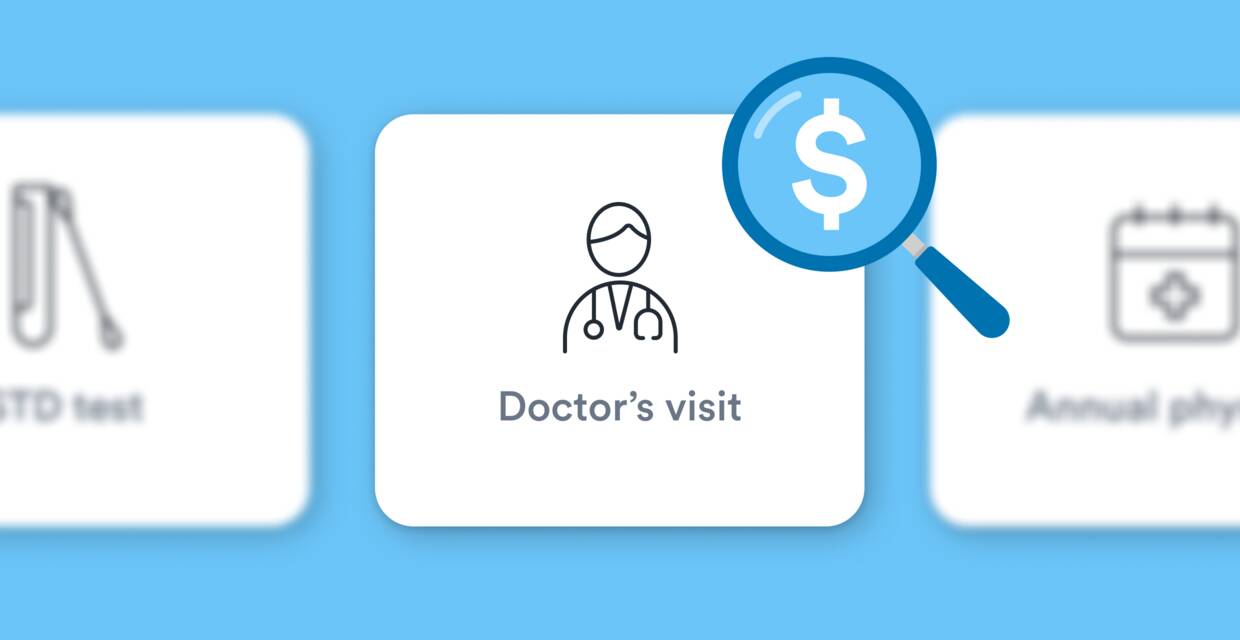
The cost of a doctor's visit
According to Solv’s Chief Medical Officer, Dr. Rob Rohatsch, the cost of a doctor’s visit can vary widely depending on factors such as:
- The type of doctor you are seeing
- The reason for your visit
- Where you see the doctor, for example, if you go to an urgent care facility or a doctor’s office
- Whether you are a new or established patient
- Any necessary tests or treatments
- Whether you need lab work
Visits to specialists such as primary care providers, pediatricians, and psychiatrists were lower than the average cost, while the most expensive doctor’s visits were for orthopedists and cardiologists.
Data from the Agency for Healthcare Research and Quality indicates that if you are visiting a doctor and don’t have insurance, you can expect to pay roughly the following amounts. The cost could vary depending on the factors listed above.
- Psychiatry: $159
- Pediatrics: $169
- Primary care: $186
- Dermatology: $268
- OB/GYN: $280
- Ophthalmology: $307
- Cardiology: $335
- All other: $365
- Orthopedics: $419
Additionally, if you are a new patient, there may be an additional charge associated with your new patient exam.
Where to see a doctor without insurance
If you don’t have insurance, the cost of your doctor’s visit can also be affected by where you go to see the doctor. There are many places you can seek medical care, some of which are more affordable than others, notes the Agency for Healthcare Research and Quality:
- Community health clinics often provide free medical care or low-cost care, including preventive care, health screenings, and vaccinations .
- Urgent care centers offer many health services. Many don’t require appointments, although your wait time may be less if you schedule an appointment in advance. You can expect to pay around $100 - $200 to see an urgent care provider, plus the cost of any treatments or testing you may need.
- Many health care facilities now offer telehealth services, which are often more convenient and more affordable. For some conditions, however, you may need to be seen in person for proper diagnosis and treatment.
- If your medical need is not urgent, and you know the type of doctor you need to see, you can schedule an appointment with a primary care physician or a specialist at their office. Be sure to ask about their payment policy in advance. If you don’t have insurance, you may be required to pay the entire bill at the time of service.
- If you have a medical emergency, you can visit the nearest emergency room. Even if you don’t have insurance, you will be able to receive treatment. However, this is typically the most expensive option. If you have a non-emergency medical condition that can wait until you can be seen at one of the other options, you will likely save money.
Paying self-pay prices for doctor’s visits
Even if you have insurance, you may be able to save money by paying cash for certain medical services. While preventive care may be covered at 100% by your insurance company, other tests and treatments may be applied to your deductible. If you have a high deductible and don’t expect to meet it – especially if it’s late in the calendar year – paying cash for your medical care may be a cheaper option.
Most doctor’s offices and health care providers charge a higher price when they bill the insurance company. For example, they may charge the insurance company $70 for a treatment or service, but if the patient is paying cash, they may only charge $60. This is known as the self-pay price . If you pay cash, the claim won’t be submitted to your insurance company, but you could end up saving money.
Always ask for pricing information before you agree to any testing or treatment. You are entitled to this information. As of 2021, hospitals are required to disclose self-pay prices, even when the patient has insurance. If the doctor’s office won’t provide you with this information, be persistent, or seek care somewhere else. If you plan on paying self-care prices, you aren’t limited to the providers in your insurance network. You’ll have a wider range of options to choose from, and you can choose a provider who is willing to provide fair, clear prices.
Let your doctor’s office know that you are paying out of pocket, and ask if they offer a discount for self-pay patients. Many doctor’s offices will offer special rates for patients who are paying cash or who do not have insurance; however, they may not advertise these rates, so it’s always a good idea to ask.
Know what you’ll pay ahead of time with Solv ClearPrice TM
According to Healthcare Finance News, more than half of Americans avoid going to the doctor when they’re sick due to high medical costs or unclear costs. Solv is committed to eliminating surprise medical bills with Solv ClearPrice™ . We partner with thousands of providers across the country who have agreed to display self-pay prices for their services. When you book an appointment on Solv, you will be able to see the self-pay price for many common services.
To schedule an appointment, search our directory for a provider in your area. Begin typing the service you are looking for, and choose from the list of options that appear. If you aren’t sure which type of doctor you need to see, you may want to try an urgent care clinic or a walk-in clinic . In many cases, you can schedule an appointment quickly and conveniently online, and many of our providers have same-day or next-day appointments available.
Frequently asked questions
What factors affect the cost of a doctor's visit, what is the average cost of a visit to the doctor’s office, are there any additional charges for new patients, where can i seek medical care if i don't have insurance, what is the self-pay price, are hospitals required to disclose self-pay prices, can i get a discount if i'm paying out of pocket, what is solv clearprice™.
Michael is an experienced healthcare marketer, husband and father of three. He has worked alongside healthcare leaders at Johns Hopkins, Cleveland Clinic, St. Luke's, Baylor Scott and White, HCA, and many more, and currently leads strategic growth at Solv.

Dr. Rob Rohatsch leverages his vast experience in ambulatory medicine, on-demand healthcare, and consumerism to spearhead strategic initiatives. With expertise in operations, revenue cycle management, and clinical practices, he also contributes his knowledge to the academic world, having served in the US Air Force and earned an MD from Jefferson Medical College. Presently, he is part of the faculty at the University of Tennessee's Haslam School of Business, teaching in the Executive MBA Program, and holds positions on various boards, including chairing The TJ Lobraico Foundation.
Solv has strict sourcing guidelines and relies on peer-reviewed studies, academic research institutions, and medical associations. We avoid using tertiary references.
- Agency for Healthcare Research and Quality: Expenses for Office-Based Physician Visits by Specialty and Insurance Type, 2016 https://meps.ahrq.gov/data_files/publications/st517/stat517.shtml
- Hospital Price Transparency, Centers for Medicare and Medicaid (2022) https://www.cms.gov/hospital-price-transparency
- More than half of Americans have avoided medical care due to cost (2019) https://www.healthcarefinancenews.com/news/more-half-americans-have-avoided-medical-care-due-cost
- telemedicine
- primary care
- healthcare costs
- health insurance
- urgent care

Quality healthcare is just a click away with the Solv App
Book same-day care for you and your family
Find top providers near you
Choose in-person or video visits, manage visits on-the-go, related articles.

How Much Do Annual Physicals Cost Without Insurance?
If you are in need of an annual physical, you may be wondering how much annual physicals cost without insurance....
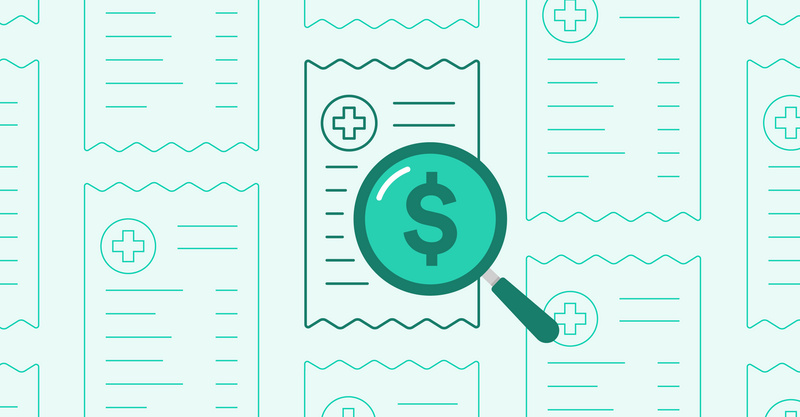
What is Price Transparency? A consumer’s guide to healthcare costs
No one likes receiving a surprise medical bill, especially when the cost wasn’t clear at the time you needed...
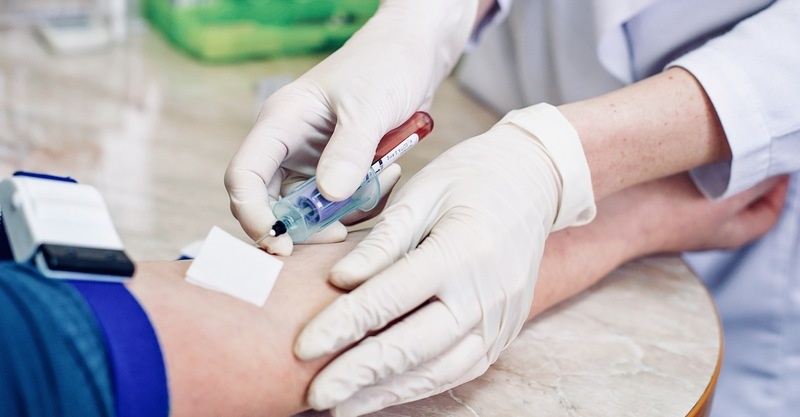
Cost of Blood Test Without Insurance in 2022
When you don’t have health insurance, you’re likely to keep a closer eye on all of your medical costs....
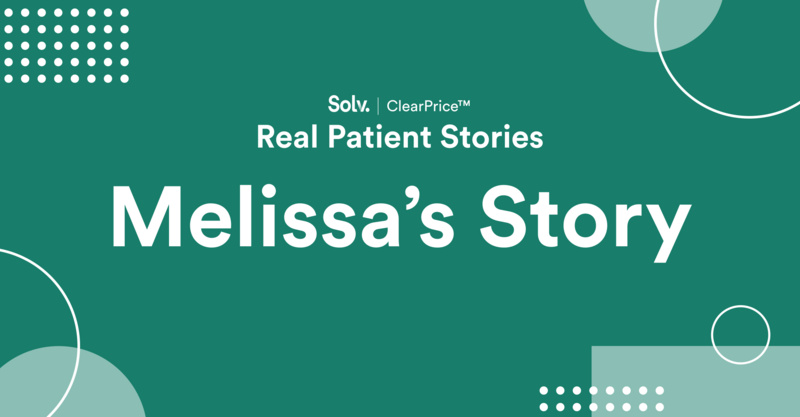
Real-Life Surprise Medical Bills: Six Different Bills for Knee Surgery
As part of Solv’s ClearPriceTM initiative, our team is highlighting real-life stories about how surprise...
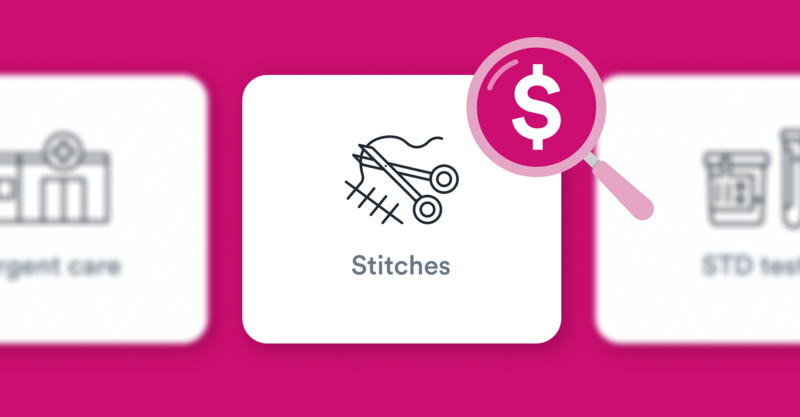
How Much Do Stitches Cost Without Insurance?
You fell and got a nasty gash that’s going to require stitches. You can easily get it fixed at an urgent care...

How to Save Money on Healthcare Through Self-Pay
Americans hold a few core beliefs about how health insurance is supposed to work. They know that it’s meant to...
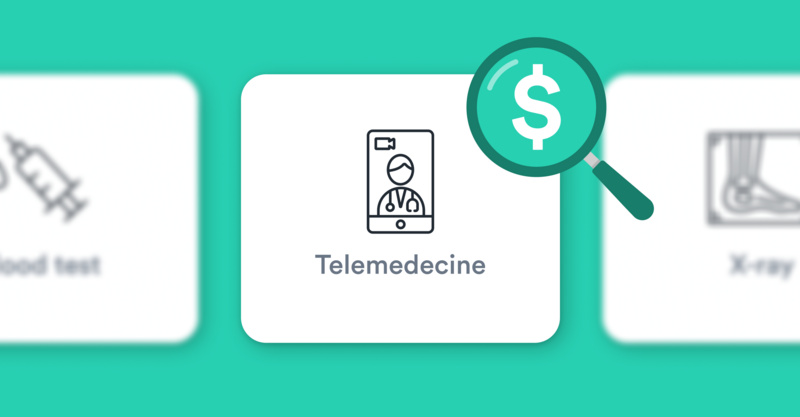
How Much Does Telemedicine Cost Without Insurance?
During the COVID-19 pandemic, when most of the world was quarantined in the confines of their own homes, the use...

Guide to Navigating an Urgent Care Visit Without Insurance
It’s no secret that more and more Americans are taking on health plans with outrageously high deductibles or...
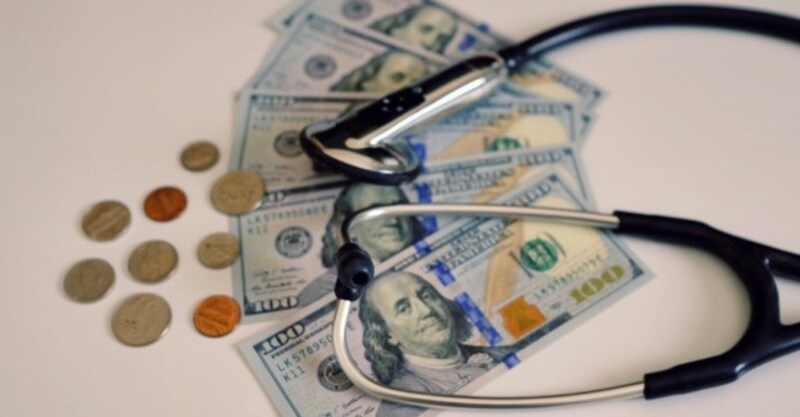
Discounts at the Doctor’s Office?
The healthcare system can be complicated. It often feels overwhelming. Between headlines and legislation,...

Real-Life Surprise Medical Bills: The $6,000 Emergency Room Bill
Related health concerns.
Abdominal Pain
COVID-19 Vaccine
Cataract Surgery
Cold Medicine
Daycare Physical
Pinched Nerve
Sexually Transmitted Diseases
Urinary Tract Infection (UTI)
Urine Culture
This site uses cookies to provide you with a great user experience. By using Solv, you accept our use of cookies.
Cost of doctor visit by state
The following estimated costs are based on cash prices that providers have historically charged on average for doctor visit and will vary depending on where the service is done. The prices do not include the anesthesia, imaging, and other doctor visit fees that normally accompany doctor visit.
Need help to cover that price?
See how Sidecar Health insurance can help cover your medical needs.
What happens at a doctor's visit?
People go to the doctor for routine physical exams as well as acute care when they get sick or injured. Visits to the doctor are important for preventing disease and managing any health problems. During your doctor’s visit, the physician checks your blood pressure, temperature, and heart rate.
Your doctor may listen to your heart, check your ears, nose, and mouth, and perform a physical exam. They may also ask you about your medical history and the medications you take. Your doctor may want you to have blood drawn for laboratory testing during your doctor’s visit.
How long should a doctor’s visit last?
It’s common for your entire visit to the doctor to take a long time. From start to finish, your appointment may take well over an hour . Many patients sit in the waiting room before being called back for examination.
How long you’ll wait depends on your specific doctor’s office and how busy they are. Once you’re in the exam room, the visit with your doctor will go quickly. On average, patients spend about 20 minutes in the exam room with their doctor.
Why are doctor visits so expensive?
Doctor's visits are expensive for several reasons, including their offices’ administrative responsibilities and the cost of medical services. Your doctor’s office has to work with different insurance companies and pay administrative staff trained in medical billing. Your doctor charges for their services, lab work, or imaging they run and may charge facility fees as well.
How much does a doctor visit cost without insurance?
Without insurance, your doctor’s visit can cost hundreds of dollars. On average, people in the U.S. pay just under $400 for their annual physical exam at a doctor’s office if they don’t have insurance. These costs include the provider fee for seeing the doctor and costs for any blood work or imaging that’s needed.
What are the signs of a bad doctor?
Know the warning signs of a bad doctor so you can avoid problems and get better medical care. One sign is if your doctor doesn’t listen to you or take your concerns into account during your visit. Another is if your doctor rushes through your appointment, not giving you the time needed to deal with your concerns.
A third warning sign is if your doctor doesn’t explain why certain tests or treatments are needed in a way you can understand.
What should you not tell your doctor?
Your doctor doesn’t need to know every detail about your life to provide proper care. But they do need you to be truthful about your health. You should never lie about the symptoms you’re experiencing or the medications you’re taking. If you aren’t taking medications as prescribed, your doctor needs to know. You don’t need to tell them health details they already know or give them any of your financial information.
Costs vary by specialty
The cost of a doctor visit could vary depending on the specialty. To see the cash prices for a specialist visit, type is a specialty.
* Savings estimate based on a study of more than 1 billion claims comparing self-pay (or cash pay) prices of a frequency-weighted market basket of procedures to insurer-negotiated rates for the same. Claims were collected between July 2017 and July 2019. R.Lawrence Van Horn, Arthur Laffer, Robert L.Metcalf. 2019. The Transformative Potential for Price Transparency in Healthcare: Benefits for Consumers and Providers. Health Management Policy and Innovation, Volume 4, Issue 3.
Sidecar Health offers and administers a variety of plans including ACA compliant and excepted benefit plans. Coverage and plan options may vary or may not be available in all states.
Your actual costs may be higher or lower than these cost estimates. Check with your provider and health plan details to confirm the costs that you may be charged for a service or procedure.You are responsible for costs that are not covered and for getting any pre-authorizations or referrals required by your health plan. Neither payments nor benefits are guaranteed. Provider data, including price data, provided in part by Turquoise Health.
The site is not a substitute for medical or healthcare advice and does not serve as a recommendation for a particular provider or type of medical or healthcare.
- Guides & Resources
- Do You Get Paid To Live In Alaska? If Yes, How Much?
- What Happens If You Don't Report Bitcoin Gains To IRS?
- What Is The Cost Of Lab Tests Without Insurance In 2023?
- How Long Can I Leave My House Unoccupied
- Health Insurance Alternatives In The USA
- All Insurance Related Guides →
- Comparisons
- Best Rental Car Insurance
- Best CCW Insurance Providers
- Best Mortgage Protection Insurance Companies Of 2023
- Top Health Insurance Companies In Utah
- Best Health Insurance In New York
- All Insurance Comparisons →
- Expert Opinions
- All Insurance Expert Opinions →
- I Need Money Now! What Can I Do? 10 Ways To Get Money Fast!
- Are Crypto Losses Tax Deductible In The U.S.?
- Can The IRS Track Bitcoin: A Guide To The 2023 Tax Season
- How Does PayPal Make Money?
- How Does Venmo Make Money?
- All Money Related Guides →
- Best Stock Portfolio Tracking Apps
- All Money Comparisons →
- All Money Expert Opinions →
- What's The Best Place To Sell Your PS4 And PS5 For Cash?
- Trademark Symbol - Everything You Need To Know About It
- Top 10 Lowest Paying Jobs In The US
- LLC Benefits By State [Costs, Requirements, Cons And More]
- Trademark Vs LLC - 5 Differences Between Them
- All Business Related Guides →
- All Business Comparisons →
- All Business Expert Opinions →
- What Mortgage Can I Get On A 70K Per Year Salary?
- How To Get A Car Loan From Wells Fargo?
- How Do Banks Verify Income For Auto Loans?
- How To Refinance A Car In Someone Else’s Name?
- How Can You Reduce Your Total Loan Cost?
- All Loans Related Guides →
- All Loans Comparisons →
- 5KFunds Review: Get Up To A $35,000 Loan With Bad Credit
- BadCreditLoans.com Reviews (2023): Pros, Cons & Alternatives
- LoansUnder36 Reviews: Is It The Right Choice In 2023?
- All Loans Expert Opinions →
- How To Withdraw Money From Your Robinhood Account?
- How To Withdraw From Crypto.com To A Bank Account?
- 5 Alternatives To Lithium Battery
- How To Add Money To A Robinhood Account
- Can You Buy Stocks With A Credit Card
- All Investments Related Guides →
- All Investments Comparisons →
- All Investments Expert Opinions →
- How To Get Amazon Prime For Free
- Can I Retire At 60 With 500k?
- All Savings Related Guides →
- All Savings Comparisons →
- All Savings Expert Opinions →
Cost Of A Doctor Visit Without Insurance
By: Smiljanic Stasha
Last modified: Sep 29, 2022
The cost of a doctor visit without insurance can depend on many factors, such as the state, facility, treatment, etc. However, this article will give you an average cost of what you should expect when seeing a doctor without an insurance policy.
How Much Is a Doctor's Visit Without Insurance?
Typically, your insurance coverage determines the cost of a doctor 's visit. So, how much is a doctor’s visit without insurance ? A doctor 's appointment costs between $300 and $600 if you don't have insurance, but this number might vary depending on lab tests, the facility, and the procedures performed during the visit .

The Average Cost for a Doctor Visit by Speciality
The cost of a doctor 's visit is determined by whether or not you have health insurance and what your policy covers. The price will differ depending on several factors, including the kind of doctor you're going to. Additionally, the course of treatment will affect the price. For example, if laboratory testing is required. Therefore, the overall cost depends on what services you will get.
However, people should not avoid going to the doctor because of the cost, as their health should be a priority. If they put off receiving immediate help, it could cost them even more in the long run, both in terms of their health and money.
Fortunately, you can still see a doctor and receive medical treatment such as preventive care, acute care, urgent care , or emergency care, even if you don't have health insurance. The tricky part is locating services that are within your budget. Community health clinics, walk-in clinics, and direct care providers are good places to start.
Related: How Much Does a Psychiatrist Cost Without Insurance?
Services That You Will Receive
When you consider billable items like blood tests, x-rays, and ambulance rides, the costs of medical treatment quickly add up.
Diagnostics test costs vary widely depending on your location and region. According to the Healthcare Booklet, a blood count lab test can cost anywhere between $20 and $120, a chest x-ray can cost between $50 and $250, and a prenatal ultrasound can be between $90 and $500.
Related: How Much Does CT Scan Cost Without Insurance?
Related: How Much Does an MRI Cost Without Insurance?
Related: How Much Is an Ultrasound Without Insurance?
Can the Expense Be Reduced?
So, can you reduce a doctor’s visit cost without insurance? Fortunately, there are a couple of things you can do to reduce your costs.
First, you should mention you are uninsured so the center can offer you the care that fits your budget. Secondly, you can also ask for a payment plan and strategically pay them off each month. Lastly, try to use prescription savings cards and look for drug samples or a generic version of your medicine. Overall, this should reduce the out-of-pocket price of your treatment.
What Affects the Cost of a Doctor's Visit?
Patients can now find out how much their health care services will cost through a handful of indicators. This is crucial information to have on hand because the expenses are usually lower than those of an urgent care facility or an emergency room.
According to the Healthcare Bluebook, an ACL knee surgery in Grand Rapids can cost anywhere between $6,498 and $23,098. In Detroit, a gall bladder removal can range from $3,683 to $16,509.
Therefore, most of the time, in the US, the location where you get the health care dictates the cost of the care itself. So make sure you inquire about the costs of the place before going to stay within your budget.
When seeing a doctor or another healthcare provider , almost all private insurance policies require the insured person to pay some money before the treatment. A primary care physician's visit usually costs $15 to $25 in copays. However, a specialist's copay will usually range from $30 to $50.
In some situations, the cost might be connected to the facility you visit . However, the cost should be mainly connected to the care you get or your insurance policy.
By facilities, we mean places like urgent care , emergency room, and doctor's office. If you go to a facility that is not included in your policy you might end up spending money out of your pocket.
Corruption Cost Over $500 Billion Every Year
We have to mention corruption, a global issue that impacts health systems globally. It can take various forms, but it always diverts resources away from patients, resulting in inferior treatment quality.
Corruption is estimated to cost the worldwide public health system around $500 billion every year. This is significantly more than is required to provide universal health coverage. Donors should support long-term, strategic approaches to health sector integrity grounded in a thorough understanding of the sector's dynamics and the roles of many actors.
Globally, 1.6% of annual deaths of children under five and more than 140,000 deaths can be explained in part by corruption. Corruption is a complex and multifaceted challenge that must be fought.
In Conclusion
Overall, it's hard to predict the exact cost of a doctor’s visit without insurance , but this article gives you a rough idea of what to expect. The cost depends on many factors and situations, but, as previously mentioned, you can take a couple of steps to reduce the cost.
Additionally, try to have a health insurance policy if you don’t already. During these unpredictable times, it's always better to be safe and covered.
Where to See a Doctor if You Do Not Have Insurance?
You can visit a doctor without insurance, but the costs will vary depending on your situation. Additionally, keep in mind that not all providers charge the same rates, so researching before visiting your local urgent care is recommended. However, always choose what’s best, not the cheapest.
Can Providers Refuse Treatment?
A doctor may refuse treatment to a patient in certain circumstances. However, they cannot refuse treatment when someone needs urgent care. For example, doctors in emergency rooms have a legal obligation to treat everybody who walks through the door.
Policy Advice is a website devoted to helping everyday people make, save, and grow money. While our team is comprised of personal finance pros with various areas of expertise, nothing can replace professional financial, tax, or legal advice.
Policy Advice is a participant in the Amazon Services LLC Associates Program, an affiliate advertising program designed to provide a means for sites to earn advertising fees by advertising and linking to Amazon.com.Policy Advice is a participant in the Amazon Services LLC Associates Program, an affiliate advertising program designed to provide a means for sites to earn advertising fees by advertising and linking to Amazon.com
Stay In Touch
- Investments
About Website
- Terms of use
- Privacy Policy
- Affiliate Disclosure
© Copyright 2022 PolicyAdvice.net. All rights reserved.
Thanks for visiting! GoodRx is not available outside of the United States. If you are trying to access this site from the United States and believe you have received this message in error, please reach out to [email protected] and let us know.
This Is How Much Your Health Care Would Cost Without Insurance
Ready for some sticker shock?

You might think the financial benefit of having health insurance is mostly tied to major moments—your appendix bursts, you break a leg snowboarding, you’re having a baby—but that’s really just the tip of the bill-lowering iceberg.

The behind-the-scenes sale
Here’s how it works: “Every hospital and doctor’s office has something called a charge master, which is a list of rates they charge for every single procedure,” says David Johnson, CEO of 4 Sight Health, a thought leadership and advisory company based in Chicago. “But those amounts are somewhat made up, and almost nobody pays them.”

That’s because insurance companies negotiate with the hospitals and doctor’s offices in their network to come up with their own lower rates for literally every procedure. It’s why you tend to see a discount on any doctor’s bill you get—even if you’re responsible for the whole thing because you haven’t hit your deductible yet.
One thing to keep in mind: Those discounted rates are only for in-network doctors and hospitals. Even if you have health insurance, you’ll end up paying the higher master charge rate if you go out-of-network.
While the price the insurance company negotiates can vary (they tend to be about half of the charge master cost ), one thing tends to be certain: Anyone who doesn’t have insurance is going to end up paying a ton more. “If you don’t have coverage, it defaults to the charge master rate,” says Johnson. It’s no wonder one out of five uninsured people skip treatment because of cost.
Watch your wallet
All of this can add up quickly, even if you aren’t getting anything too major done. While it’s impossible to say what your cost for different procedures would be with insurance (that changes based on everything from where you live and who your insurer is to your deductible and co-insurance rates), here are some of the average charge master rates for common procedures in the U.S., according to an International Federation of Health Plans report:
- MRI: $1,119
- Cataract surgery: $3,530
- Day in the hospital: $5,220
- Giving birth: $10,808
- Appendix removal: $15,930
- Knee replacement: $28,184
Did someone say free?

On top of the discount you get just for having an insurance plan, there are some procedures and visits that are absolutely free if you have insurance. That’s right: They don’t cost a dime. These services fall under the umbrella of preventive care, and after the Affordable Care Act was passed, they became fully covered for anyone with insurance.
Unfortunately, if you don’t have coverage, you’re stuck paying for them. Here’s how much these otherwise-free services might run you:
- Flu shot: This life-saving vaccine will run you about $40 at your local Rite-Aid pharmacy .
- Screenings for diabetes and cholesterol: CityMD , a chain of urgent care facilities in New York, New Jersey, and Washington, offers these services for about $125 to $200, plus additional lab fees.
- Annual wellness visits: On average, this costs $160, according to a John Hopkins study .
- HPV vaccine: You need this shot twice, and it will cost ya about $250 each time, according to Planned Parenthood .
- Birth control pills: The monthly packs will add up to $240 to $600 a year .
The bottom line: With the average employer-sponsored plan costing you $119 a month , that $1,400 or so a year will pay for itself in just a few doctor’s visits or prescriptions. And if something serious happens—like a sprained ankle or a suspicious mole your dermatologist wants to remove—you know you’re covered.

United Healthcare

Is Spending $$$ On Your Health Actually Worth It?

3 Major Health Goals Everyone Should Hit By 30

Yes, It's Possible To Stay Fit Without Going Broke

Gen Z Is Panicking About Fertility. Should They?

How To Decide Between A Therapist Vs. Life Coach

3 Things That Put Your Bone Health At Risk

7 Best Pillows For Back Pain, According To Editors

Christina Applegate Health Updates: What To Know

What To Know About Celine Dion’s Health Status

9 HigherDose Wellness Favorites On Rare Sale

Kelly Osbourne Didn't Use Ozempic For Weight Loss
- Program Finder
- Admissions Services
- Course Directory
- Academic Calendar
- Hybrid Campus
- Lecture Series
- Convocation
- Strategy and Development
- Implementation and Impact
- Integrity and Oversight
- In the School
- In the Field
- In Baltimore
- Resources for Practitioners
- Articles & News Releases
- In The News
- Statements & Announcements
- At a Glance
- Student Life
- Strategic Priorities
- Inclusion, Diversity, Anti-Racism, and Equity (IDARE)
- What is Public Health?
Primary Care Visits Available to Most Uninsured But at a High Price
‘secret shopper’ study finds cost of basic new patient visit without health insurance far more than most uninsured can afford.
Uninsured people don’t have any more difficulty getting appointments with primary care doctors than those with insurance, but they get them at prices that are likely unaffordable to a typical uninsured person, according to new Johns Hopkins Bloomberg School of Public Health-led research.
And payment options are not very flexible, with only one in five people told they could be seen without paying the whole cost up front, suggests the new study published in the May issue of the journal Health Affairs .
“There’s a discouragement factor for uninsured people when it comes to seeing a doctor when they are sick,” says study leader Brendan Saloner, PhD, an assistant professor in the Department of Health Policy and Management at the Johns Hopkins Bloomberg School of Public Health. “If you pick up the phone and the cost is high, you may stop looking – even if you are really sick. For a lot of people, it’s bewildering to navigate the primary care market without health insurance.”
Saloner’s research is based on data from a 10-state telephone survey in which callers posed as patients from November 2012 to March 2013 to find out whether they could get a new patient appointment with a primary care doctor and, if so, how much a basic visit would cost. Callers only revealed their uninsured status after being offered an appointment. The audit, which included 1,613 completed calls, was conducted before the implementation of the Affordable Care Act in late 2013, which not only has given more patients private insurance but also has increased the number of people with Medicaid in many states.
While there are fewer uninsured people now and the number is expected to drop again in 2015, Saloner says, there is still a sizable uninsured population in the United States, particularly those who live in states that have not expanded Medicaid and who still believe that coverage on the ACA marketplace is unaffordable.
In total, roughly 79 percent of uninsured callers in the study were offered an appointment, while only about 6 percent who were denied an appointment were told that the denial was due to insurance status (other reasons included that the practice wasn’t taking new patients). The average price of a new uninsured patient appointment was quoted as $160, with some variation among states (a low of $128 in Pennsylvania and a high of $188 in Oregon). The price was significantly lower at federally qualified health centers ($109). Prices were also lower for offices in ZIP codes with higher poverty rates. The price was for a basic new patient appointment, and the callers did not request price quotes for any additional blood work, imaging or other testing.
Still, Saloner points out, a medical bill of $100 would represent about one-tenth of the monthly income of a single adult living at the poverty level.
The average price quoted to callers in the study was lower than actual total amounts paid for privately insured new patient primary care visits in the same states (an average of $200), as reported in previously reported research. Of those visits, the average out of pocket cost for privately insured patients was $49.
Only 18 percent of uninsured callers were told they could bring less than the full amount to the visit and pay the rest later. On average, those told they could arrange a payment plan were told to bring 61 percent of the cost of the appointment to be seen.
Saloner says expanding Medicaid beyond the 29 states and the District of Columbia that have already done so, would enable more people to afford basic health care.
“Even with improvements coming with implementation of the Affordable Care Act, the system will make an uninsured person really think twice about whether he or she needs to go to the doctor,” Saloner says.
“ Most Uninsured Adults Could Schedule Primary Care Visits Before the ACA, But Average Price Was $160 ” was written by Brendan Saloner, Daniel Polsky, Genevieve M. Kenney, Katherine Hempstead and Karin V. Rhodes. Collaborators are based at the University of Pennsylvania, the Robert Wood Johnson Foundation and the Urban Institute.
The study was supported by the Robert Wood Johnson Foundation.
Media contacts for the Johns Hopkins Bloomberg School of Public Health: Stephanie Desmon at 410-955-7619 or [email protected] and Barbara Benham at 410-614-6029 or [email protected] .
8 Ways to Get Care When There Are No Primary Care Doctors
No physicians accepting any patients in your area? Learn how to get treated when you can’t find a primary care doctor.
This article is based on reporting that features expert sources.
Find a Primary Care Doctor Near You

Getty Images
You've likely felt the squeeze of the primary care provider shortage. Having a minor urinary tract infection , wrist injury or concern about a suspicious mole aren't always reasons to go to the emergency room. But, having difficulty finding a provider in your area, or one without months-long wait times, may make it feel like your options are limited.
Can't Find a Doctor Accepting New Patients? Here's Why
Why is there a primary care provider shortage? Several reasons:
- Fewer medical students are interested in the profession . "Unfortunately, too few of today’s medical students want to become family practice physicians," says David Lenihan, CEO of Ponce Health Sciences University, a medical school with campuses in Ponce, Puerto Rico, and St. Louis, Missouri. He is also the co-founder of Tiber Health. "A big reason for this is often because the income potential is better in more specialized fields."
- Challenges with insurance reimbursement . Lenihan further explains that primary care physicians aren't always affiliated with well-established medical systems, making insurance reimbursement and credentialing time-consuming and difficult.
- Primary care provider burnout . With pressure to see more patients in shorter time frames, coupled with the growing administrative burden of paperwork, the fulfillment of connecting with individual patients is stifled.
- Difficulties with residency . Although more physicians matched into family medicine residencies in 2024 compared with 2023, only 8.3% of matched MD seniors in the U.S. matched in family medicine, according to the American Academy of Family Physicians. Family medicine matching last peaked in 1997. Dr. Sulagna Misra, founder of Misra Wellness in Los Angeles, says that many physician residents are not taught by other practicing physicians due to the primary care shortage.
The AAFP estimates that by 2025, the United States will have a shortage of more than 50,000 primary care providers.
8 Ways to Get Treatment
Here are eight options to try when you can't find a doctor accepting new patients, if you don't have a primary doctor or if the wait times are too long.
- Look into telehealth options.
- Call a local hospital for help.
- Check local medical and nursing schools.
- See a nurse practitioner or physician assistant.
- Visit urgent care.
- Visit a pharmacy clinic.
- Consider concierge medicine
- Try a community health center.
1. Look Into Telehealth Options
If you're looking for how to find a primary care doctor fast, telehealth is a viable option.
Finding a telehealth provider can be a similar process to finding an in-person doctor, says Dr. Brittany Kunza, a Washington, D.C.-based medical director and family medicine physician with PlushCare, a virtual health platform with primary care, therapy and weight management options.
Kunza suggests the following considerations:
- Check your insurance coverage . Sometimes, insurance companies contract with one telemedicine agency to provide this type of covered service. Call the member services number on your insurance card to inquire about your coverage.
- Identify your care needs . Telehealth services can range from primary care, mental health and chronic conditions to preventive care and urgent care.
- Do your research . There are many telehealth services available online. View their websites directly to understand if their offerings meet your needs.
How should you prepare for a telehealth appointment?
"The best approach is a proactive approach," says Dr. James Powell, a board-certified internist based out of East Setauket, New York. Powell is also the CEO of DocGo's Clinical Practice Group. "Prepare to log on before the session in a quiet area with a location that maximizes internet access."
2. Call a Local Hospital for Help
Your local hospital likely has a busy emergency room. The hospital is incentivized to connect patients with primary care providers for nonemergency care that otherwise causes unnecessary crowding at their facility.
Most hospital operators can't make any appointments for you, but they can provide you with some information. You can ask:
- Which primary care clinics are affiliated with this hospital system?
- Which local medical doctors are affiliated with your hospital system?
- Which primary care clinic is closest to your hospital location?
- Does this hospital system offer telehealth visit options?
3. Check Local Medical and Nursing Schools
See if there's a medical school or nursing program in your area, Lenihan suggests.
This is ideal for:
- Routine appointments.
- Annual check-ups.
- Nonurgent issues, like getting a tuberculosis test or discussing minor ongoing joint pain.
Often, these institutions have students who work in affiliated clinics and are supervised by licensed medical staff.
"If such an option exists, it’s usually easier and faster to make an appointment there to receive the care that you need, and it’s also more affordable than visiting a doctor’s office," Lenihan adds.
4. See a Nurse Practitioner or PA (Physician Assistant)
A primary care provider with MD or DO credentials is less likely to have available appointments. Consider a visit with a nurse practitioner or a PA, who is more likely to have earlier time slots or same-day appointments.
MDs and DOs are physicians who have completed medical school and residency training. NPs have completed an undergraduate nursing degree as well as an advanced nursing degree accompanied by additional clinical hours. PAs typically earn a Master of Science in physician assistant studies with clinical hours. Both NPs and PAs have to pass a respective licensing exam and keep up on continuing education to maintain their license.
5. Visit Urgent Care
If your concern or condition can't wait more than a few days to address, consider going to urgent care. Urgent care is the go-between for family practice clinics and emergency rooms. Many urgent care facilities are stand-alone facilities. They don't have as many resources, like advanced imaging, on-call doctors or operating rooms, as an emergency room has.
Urgent care centers can see you without an appointment and are prepared to treat more acute health conditions. Urgent care is useful for conditions like:
- Mild injuries, such as a sprained wrist or bumping your head without losing consciousness.
- Persistent mild to moderate stomach pain.
- An infection, such as a cold or a flu , that isn't getting better with home care.
You should still contact your primary care physician, but the faster you get fully evaluated, the sooner treatment can begin, says Dr. Evelyn K. Balogun, the chief medical officer of ambulatory services for Inspira Health. Balogun is based in Philadelphia.
If you have any of the following conditions, Balogun says to seek emergent medical attention at an emergency room or by calling 911:
- Sudden, extreme or worsening pain.
- High fever.
- Coughing blood.
- Signs of a cardiac event, like sudden chest pain , or chest pain accompanied by arm or jaw pain.
- Signs of a neurological event, like facial drooping, vision loss or slurred speech.
6. Visit a Pharmacy Clinic
Pharmacy clinics are broadening their capabilities, Balogun says.
Depending on the pharmacy clinic, you may be able to use their services for the following:
- Questions or consultations about prescription medications or mixing medications.
- Blood pressure checks.
- Routine immunizations.
- Removal of stitches.
- Screening for infections, like strep or influenza.
Check the website of your local pharmacy clinic to see their offerings and pricing.
Balogun adds that pharmacy clinics shouldn't replace going to the emergency room or urgent care if you have a medical emergency.
7. Consider Concierge Medicine
Concierge medicine – also known as retainer-based or boutique medicine – is when you pay a monthly or annual fee for access to your primary care provider. These providers decline to accept insurance . This is a great option if you don't have a pressing concern but want an alternative for how to find a family doctor.
Kunza says some concierge practices can be more cost-effective. However, these practices are best for those without complex medical histories and who are mainly looking to keep up with preventive care and the occasional more urgent need.
She adds that concierge medicine has the following pros:
- The convenience of having direct access to your primary care provider .
- No waiting room lines.
- Availability of after-hour or same-day appointments.
The biggest cons include:
- A large monthly or annual fee, usually not covered by insurance.
- Inability to manage complex medical needs or multiple chronic conditions.
- It takes time to establish the relationship, so getting a concierge doctor because you have an urgent concern is likely not an option. You'll have to set this up ahead of time to utilize it the next time you have a health need arise.
8. Try a Community Health Center
Community health centers are usually walk-in clinics located in communities with limited access to medical care. They are designated as Federally Qualified Health Centers and may be in rural areas or in underserved communities. CHCs accept private and public insurance, like Medicare and Medicaid , and provide sliding-scale payment options if you don't have insurance .
Offerings at each CHC differ slightly, but most have the capability to treat issues such as:
- Preventive care.
- Immunizations .
- Basic family planning.
- Minor injuries.
- X-ray imaging.
Visit the Health Resources and Services Administration website to find a CHC near you.
The Bottom Line
The primary care provider shortage is a big barrier to accessing timely medical care. If your doctor is not accepting new patients, or if the wait times for appointments are too long, there are options to receive treatment and preventive care. Consider alternative clinics, telehealth or asking for resources in your community to connect you with medical providers.
Types of Primary Care Doctors
Elaine K. Howley May 23, 2022

The U.S. News Health team delivers accurate information about health, nutrition and fitness, as well as in-depth medical condition guides. All of our stories rely on multiple, independent sources and experts in the field, such as medical doctors and licensed nutritionists. To learn more about how we keep our content accurate and trustworthy, read our editorial guidelines .
Balogun is the chief medical officer of ambulatory services at Inspira Health, a charitable nonprofit health care organization based in Philadelphia.
Kunza is a medical director and family medicine physician with PlushCare, a virtual primary care and mental health platform. Kunza is based in Washington, D.C.
Lenihan is the CEO of Ponce Health Sciences University, a medical school with campuses in Ponce, Puerto Rico, and St. Louis, Missouri. He is also the co-founder of Tiber Health, a technology company focused on remedying the physician shortage.
Misra is the founder of Misra Wellness in Los Angeles.
Powell is a board-certified internist and CEO of DocGo's Clinical Practice Group. DocGo is a provider of mobile medical services and transportation. Powell is based in East Setauket, New York.
Tags: patient advice , health , doctors
Most Popular

Patient Advice

health disclaimer »
Disclaimer and a note about your health ».

Your Health
A guide to nutrition and wellness from the health team at U.S. News & World Report.
You May Also Like
Key medicare enrollment deadlines.
Joanne Kaldy and Vanessa Caceres April 26, 2024
LASIK Eye Surgery
Mariya Greeley and Elaine K. Howley April 26, 2024
What Makes a Good Doctor?
Paul Wynn April 25, 2024

Americans' Primary Care Experiences
Annika Urban April 24, 2024
Does Medicare Cover Cataract Surgery?
Elaine K. Howley April 24, 2024
RSV Vaccines: Who Should Have One?
Stacey Colino April 22, 2024

Your Guide to Hip Replacement Surgery
Lisa Esposito and Elaine K. Howley April 22, 2024

Streamlined Maternity Services Survey
Jennifer Winston, Ph.D. , Xinyan Zhou and Kaylan Ware April 17, 2024

Major Food Allergens
Claire Wolters April 15, 2024

What to Know About Creatinine Levels
Christine Comizio April 12, 2024

- Share full article
Advertisement
Supported by
Times Insider
Taking Account of Rising Health Care Costs
Have your out-of-network insurance bills skyrocketed? Chris Hamby, an investigative reporter for The Times, may have an explanation.

By Josh Ocampo
Navigating the health care system in the United States can often feel like being lost in a maze. What kind of doctor should I see? Who takes my insurance? What even is a co-pay, anyway?
For that reason, Chris Hamby, an investigative reporter, has devoted much of his five-year career at The New York Times to guiding readers through such dizzying questions. His latest article, which was published online this month , explored the complex subject of insurance bills.
Last year, Mr. Hamby began investigating MultiPlan, a data firm that works with several major health insurance companies, including UnitedHealthcare, Cigna and Aetna. After a patient sees an out-of-network medical provider, the insurer often uses MultiPlan to recommend how much to reimburse the provider.
Mr. Hamby’s investigation revealed that MultiPlan and the insurers are incentivized to reduce payments to providers; in doing so, they score larger fees, which are paid by the patient’s employer. Many patients are forced to foot the rest of the bill. (MultiPlan said in a statement to The Times that it uses “well-recognized and widely accepted solutions” to promote “affordability, efficiency and fairness” by recommending a “reimbursement that is fair and that providers are willing to accept in lieu of billing plan members for the balance.”)
In an interview, Mr. Hamby shared his experience poring over more than 50,000 pages of documents and interviewing more than 100 people. This conversation has been edited.
Where did your investigation begin?
We were broadly looking at issues in health insurance last year. MultiPlan kept coming up in my conversations with physician groups, doctors and patients. At first, it was unclear what exactly MultiPlan did. There were some lawsuits regarding its work with UnitedHealthcare, but it was difficult to understand the company’s role in the industry. We eventually accumulated more information about MultiPlan’s relationship with big insurance companies.
What were doctors and other providers saying?
Mostly that they’d seen their reimbursements dramatically cut in recent years and that it was becoming difficult for them to sustain their practices. They said they previously had more success negotiating and obtaining higher payments.
Of your findings, perhaps the most surprising is that MultiPlan receives a cut of the money it saves employers.
Yes, but I wouldn’t call it a cut. It’s very complicated. MultiPlan charges a fee based on the savings that they obtain for employers. But in some cases, that savings is passed onto a patient as a bill. Both insurers and MultiPlan have financial incentives to keep payments low because they receive more money, in many cases.
But it wasn’t always that way, correct?
Right. MultiPlan was founded in 1980, and it was a fairly traditional out-of-network cost containment company. Doctors and hospitals agreed to modest discounts with MultiPlan, and agreed not to try and collect more money from patients. It was a balancing act.
But that balancing act changed over time. MultiPlan’s founder sold the company to the Carlyle Group, a big private equity firm, in 2006. It moved away from negotiations and toward automated pricing. They bought one company in 2010, and another, key company in 2011, and in doing so, acquired these algorithm-driven tools that became the backbone of MultiPlan’s business.
You read more than 50,000 pages of documents for your investigation. How does one begin to sift through that much information?
I love a good trove of documents. There wasn’t some big leak. It was more about piecing together information from many different sources — legal filings, documents that providers and patients shared with me, their communications with MultiPlan and insurers. We asked federal judges to unseal a few documents that had previously been confidential, including emails between Cigna executives, paperwork describing how some of MultiPlan’s tools worked and data on thousands of medical claims.
What was the greatest challenge in your reporting?
Finding patients and providers who were willing to speak on the record about their experiences, because this is a really sensitive subject. A number of providers were concerned that if they spoke on the record, insurance companies would retaliate. For many of the patients I spoke with, it also meant putting their personal medical history out there for the public to read.
What about health care and the pharmaceutical industry drew your interest as a reporter?
For many Americans, health care is an almost universally frustrating or confusing experience. It’s one that has direct effects on people’s health, their pocketbooks or both. I really like learning about the stuff that impacts people’s health. I try to make that information accessible to millions of people who are affected by it but who might not have a lot of time to understand it.

IMAGES
VIDEO
COMMENTS
Doctors check height, weight, sleep patterns, diet, and the vaccines required by public schools. The range for a yearly physical can be anywhere from $100 to $250 or more without insurance. A CVS Minutecare Clinic may charge just $59 for a sports physical, but not all organizations will accept this as proof of physical health.
4. Ask about a cash discount. When you're shopping around, always ask for a cash discount. "Many providers will provide a discount if you pay for the entire service at the time of care," Kampine ...
The average cost of a doctor visit is $70 to $250, but it can be much higher depending on the type of treatment, provider, and location. Learn how to access medical care without insurance through community health clinics, walk-in clinics, direct care providers, or emergency room. Find out how to save money on doctor visits and get free or low-cost health insurance options.
Learn how much a doctor visit costs without insurance and how to save money with Mira, a monthly membership that offers affordable care. Compare prices for different specialists and factors that affect the cost of a doctor visit.
The average cost of a visit to the doctor's office in 2016 was $265, with expenses ranging from $159 to $419 depending on the specialty. If you don't have insurance, you can expect to pay anywhere from $50-$350 for a routine medical exam, plus any additional expenses such as x-rays, blood tests, or lab work. You can also save money by paying cash for certain services or choosing lower-cost options such as urgent care or telehealth.
The Cost of a Primary Care Visit. The average cost of a primary care visit in the United States without insurance is $171. The price will increase for any additional services not included in the typical primary care visit, such as immunizations, lab testing, prescriptions, and x-rays.
Without health insurance, an in-person appointment with a medical provider typically costs between $150 to $450. Telehealth appointments may cost much less. Factors such as where you are seeking care, lab tests ordered, and other possible procedures will also affect the total cost. In this article, I will talk about how much it costs to see a ...
Options for Doctor Visits. You have several choices if you need to see a doctor and don't have health insurance. Some of them are free while others charge fees. When you need medical care, whether it's preventive or treatment for an injury or illness, consider these: Urgent Care Centers: There are now more than 9,000 urgent care centers in ...
The web page shows the average cash prices for doctor visit in different states, based on historical data from providers. It also explains the factors that affect the cost of a doctor visit, such as insurance, anesthesia, and imaging. It does not include the cost of the provider fee or the services that are not included in the cash price.
Walk-in clinics and urgent care centers. A person does not need to make an appointment at a walk-in clinic or urgent care center, and some offer free or reduced-cost care for people without health ...
The cost of a doctor's visit without insurance can depend on many factors, such as the state, facility, treatment, etc. It can range from $300 to $600 for a regular visit or more for speciality services. You can reduce the cost by finding affordable providers, asking for payment plans, and using prescription savings cards.
How Much is a Medical Visit Without Insurance? The average visit to a healthcare professional in the U.S. in 2016 cost $265. This average, though, depends on the type of provider you're visiting, and the type of appointment. For example, an average visit to a primary care provider cost $186, while a visit to a cardiologist was $335.
Key takeaways: The cost of a telehealth visit will depend on several factors, such as your insurance, the condition, and the provider. On average, you could pay anywhere between $40 to $90 for a telehealth visit without insurance. You can save money on telehealth visits by checking your insurance coverage and asking about discounts.
On top of the discount you get just for having an insurance plan, there are some procedures and visits that are absolutely free if you have insurance. That's right: They don't cost a dime.
The cost of a primary care visit without insurance generally ranges from $150-$300 for a basic visit and averages $171 across major cities in the United States. For any additional services such as childhood and adult immunizations, lab testing, or prescriptions, there will be additional charges. Finding a primary care physician to monitor your health status during annual check-ups is a great ...
Saloner's research is based on data from a 10-state telephone survey in which callers posed as patients from November 2012 to March 2013 to find out whether they could get a new patient appointment with a primary care doctor and, if so, how much a basic visit would cost.
How much you pay depends on the type of care provider you see and the length of the visit. The average cost for basic or urgent care is $68 per visit among the eight telehealth providers we picked. You can see a doctor with our top pick, GoodRx Care, for $49.
The average cost of a doctor visit, not including procedures or tests, is $80-$170 across the U.S. depending on the purpose, tests and location of the visit. For someone without insurance, the cost can be 2-5 times higher than for someone with insurance. Learn how to estimate the cost of a visit, find out the average costs by state and use the No Surprises Act to get clear pricing information.
Understanding the cost of your doctor visit. In the fourth installment of this 4-part series on health care costs, we look at the different types of care to help you better understand what you'll need to pay. Understanding your health plan costs can help you choose the right coverage and budget for your health care spending.
The Post-Pandemic Role of Virtual Care. 2. Call a Local Hospital for Help. Your local hospital likely has a busy emergency room. The hospital is incentivized to connect patients with primary care ...
Doctor On Demand is a covered benefit for over 98 million Americans. If not a covered benefit, prices start at $89. Find out more. ... How much is a doctor visit without insurance? Board Certified Clinician. $89 for a 15 min consultation; Psychologist. $134* for a 25 min consultation; $184* for a 50 min consultation;
Breathing capacity test. $71. Breathing treatment. $30. Colonoscopy and removal of abnormal tissue using cautery*. $1,142. Colonoscopy and removal of abnormal tissue using snare technique*. $1,052. Colonoscopy and removal of colon tissue for examination*.
MSN
Right. MultiPlan was founded in 1980, and it was a fairly traditional out-of-network cost containment company. Doctors and hospitals agreed to modest discounts with MultiPlan, and agreed not to ...
Let's dive into how to get Ozempic® medication without an in-person visit: telehealth has made it simpler than ever to access quality care on your schedule. 1. Find a Telehealth Provider. The first step in the process is to find a telehealth provider that offers GLP-1 agonist drug treatment.
#NewsNight | #NewsNight | By Metro TV Ghana | The minister ... - Facebook ... #NewsNight